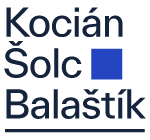Ongoing Developments in the Area of Borderline Products
Directive of the European Parliament No. 2004/27EC of 31 March 2004 amending Directive 2001/83/EC on the Community code relating to medicinal products for human use (OJ EU [2004], L 136, p. 34)
Scientific progress and the development of new types of products explain the rise in issues regarding the legal qualification of so-called “borderline” products. Borderline product issues usually arise with regard to products having combined characteristics of medicines and foods, of medicines and medical devices and/or medicines and cosmetics.
A new Directive (hereinafter the “Directive”) – which amends the directive establishing a Community code for human medicines) – is due to be implemented by the Member States by October 2005 amends the definition of “medicinal product” and introduces new principles to determine which of rules should apply in case of uncertainty. Firstly, the amended definition of “medicinal product” is now broader, to encompass, for instance, gene therapy and radiopharmaceutical products:
(a) Any substance or combination of substances presented as having properties for treating or preventing disease in human beings; or
(b) Any substance or combination of substances which may be used in or administered to human beings either with a view to restoring, correcting or modifying physiological functions by exerting a pharmacological, immunological or metabolic action, or to making a medical diagnosis (Article 1(2) of the Directive)[emphasis added]
Secondly, the Directive introduces a provision stating that if a product fits the definition of a medicinal product and, at the same time, the definition of another category of product (for instance a food), pharmaceutical rules apply, so, in this sense, prevails.
Separately, the summary of a European Commission workshop on the same topics released recently as well as other discussions announce further developments regarding borderline products.
In the area of foods, a draft regulation on nutrition and health claims made on foods is being discussed. Separately, it is worth noting that a draft regulation regarding the addition of vitamins and minerals and of certain other substances to foods is also under discussion.
In the area of medical devices, the European Commission foresees updating of existing guidelines. Further, the European Commission is considering whether to issue a communication on the legal principles and relevant methods with regard to the classification of products.


 Post a comment
Post a comment Print article
Print article

